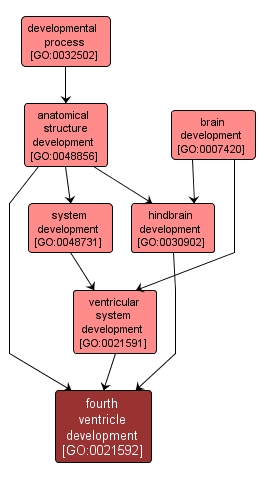| Desc: |
The process whose specific outcome is the progression of the fourth ventricle over time, from its formation to the mature structure. The fourth ventricle is an irregularly shaped cavity in the rhombencephalon, between the medulla oblongata, the pons, and the isthmus in front, and the cerebellum behind. It is continuous with the central canal of the cord below and with the cerebral aqueduct above, and through its lateral and median apertures it communicates with the subarachnoid space. |














